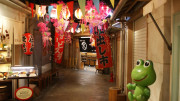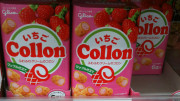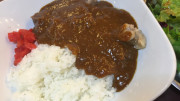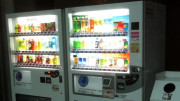Poisonous puffer fish are a speciality at many Japanese restaurants, especially around Osaka. Pufferfish are known as Fugu in Japan and depending on the region are one of a number of species. One of the more popular is the Takifugu, which is also known as the tiger blow fish. These fish are blubbery leathery looking and one of the most deadly fish. They generally have nasty spikes all over their body that poke out when they puff up as a defence mechanism.
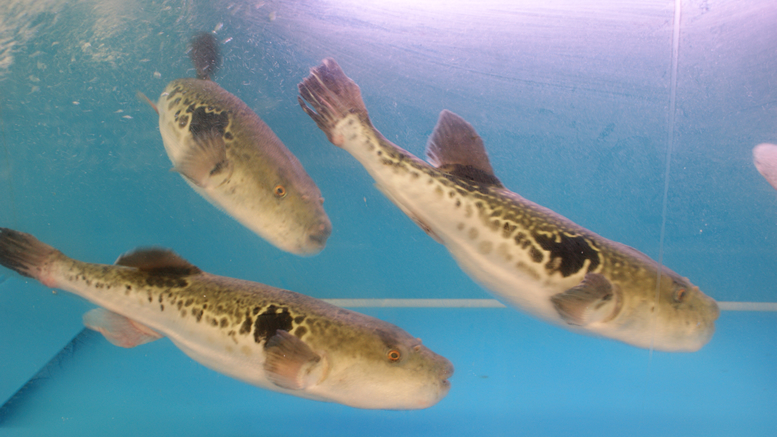
The fish has lethal amounts of a nasty poison called tetrodotoxin in some of its organs. If eaten, the poison will parallelise the victims muscles and cause the respiratory system to stop, killing the person from asphyxiation. There is no known antidote, but a person can sometimes be saved by an artificial respiratory system until the poison wears off.
The offal of the fish is banned from sale in restaurants and must be stored specially as hazardous waste, this rule was bought in after the war after many people were poisoned by eating fish flesh found in rubbish bins during food shortages. Anywhere selling the fish must be licensed to do so, to ensure proper handling of this deadly treat. Fish can be seen alive in many fish stalls at markets. However, the fish must be killed and prepared by a licensed staff member, ensuring any poison filled organs are removed.
Research has found that the organs of the fish become poisoned from eating a certain type of bacteria, In recent years some fish farming operations have been able to breed fish and keep them away from the bacteria, thus making them toxin free.
There are strict regulations on selling the fish and chefs have to be specially trained to prepare the dish. Today, it is common to see fugu in many fish markets to take home. But most of these fish are the farmed non-poisonous variety, although particular care should be taken.
Fugu is quite expensive, and it is probably the most expensive food in Japan, a market fish can cost anything from 4000 to 10000 yen. A restaurant prepared fish can cost several times more, some fancy restaurants may charge several hundred US dollars for a dish of Fugu. The fish can be cooked in a variety of ways, fried, grilled, stewed and pickled, but it is also immensely popular raw in sashimi dishes and is said to be delicious. The roe known as milt is also highly sought after. Fugu is more popular in the colder months when the fish put on a bit of extra body fat. Some 20,000 tons of the fish are eaten annually. No fugu will ever be eaten by the Japanese Emperor, there is actually a law that forbids the Emperor from trying the fish because it is so dangerous.
The fish has become so popular there are regulations now in place to protect the fish, and many of the fish are now harvested from floating fish farms. Shimonoseki in the Yamaguchi Prefecture on Japan’s lower west coast is known as the Fugu capital of Japan, but in season, fugu is readily available throughout the country.
Many of the eating and entertainment areas especially in Osaka have massive fugu shaped balloons suspended outside the fugu restaurants. The fugu signs light up at night, making a spectacular sight and brilliant photo opportunity for visitors to Japan.

